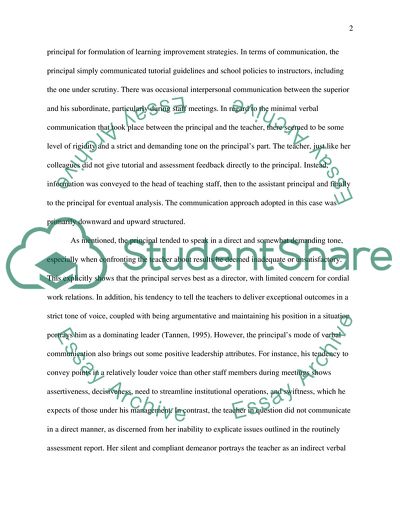Cite this document
(“Workplace Communication between principal and a teacher Essay”, n.d.)
Retrieved from https://studentshare.org/education/1656871-workplace-communication
Retrieved from https://studentshare.org/education/1656871-workplace-communication
(Workplace Communication Between Principal and a Teacher Essay)
https://studentshare.org/education/1656871-workplace-communication.
https://studentshare.org/education/1656871-workplace-communication.
“Workplace Communication Between Principal and a Teacher Essay”, n.d. https://studentshare.org/education/1656871-workplace-communication.


